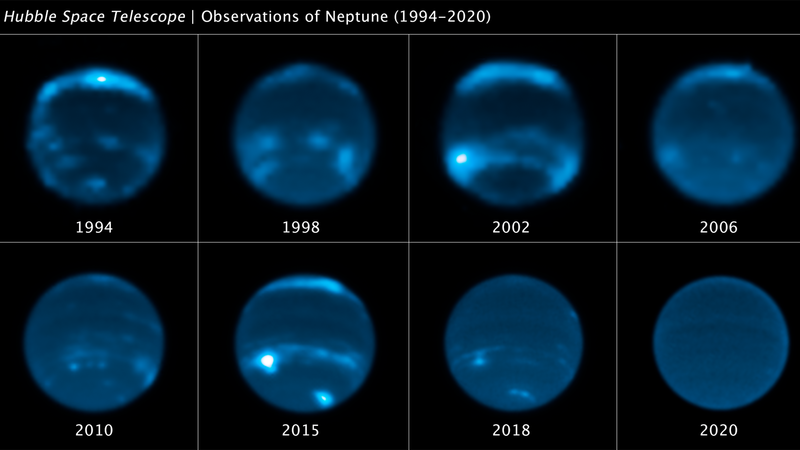SHARE
With its vanishing clouds and now a large dark spot, the planet Neptune appears to be going through some things. Here’s a bit about why the eighth planet in our solar system is causing all this drama.
Astronomers using the European Southern Observatory’s Very Large Telescope (VLT) have observed a large dark spot and a smaller bright spot next to it in Neptune’s atmosphere. This is the first time that the planet’s dark spots have ever been observed using an Earth-based telescope The findings were published on August 24 in the journal Nature Astronomy. These new spots are only occasional features in the blue background of Neptune’s atmosphere and the new results are providing clues to their mysterious nature and origin. Spots are common in the atmospheres of giant planets, with Jupiter’s Great Red Spot being the most famous. In 1989, a dark spot was first discovered on Neptune by NASA’s Voyager 2 before the spots disappeared just a few years later.
The international team of researchers used the VLT to rule out the possibility that the dark spots are caused by a ‘clearing’ in the planet’s clouds. The team’s new observations indicate that the dark spots are likely due to air particles darkening in the layer below the main visible haze layer, as these hazes and ices mix in Neptune’s atmosphere.
The team used the VLT’s Multi Unit Spectroscopic Explorer (MUSE) to split the reflected sunlight from Neptune and its spot into component colors, or wavelengths, so that they could study the spot in more detail than was possible before.
The observations also offered up a surprise result.
“In the process we discovered a rare deep bright cloud type that had never been identified before, even from space,” study co-author and University of California, Berkeley planetary scientist Michael Wong, said in a statement.
These unusual luminous clouds appeared as a bright spot along the larger main dark spot, showing that the new “deep bright cloud” was actually at the same level in the atmosphere as the main dark spot. The team says this is a completely new type of feature compared to the smaller ‘companion’ clouds of high-altitude methane ice that astronomers have previously observed.



 Space
Space Astronomy
Astronomy Science
Science Physics
Physics


